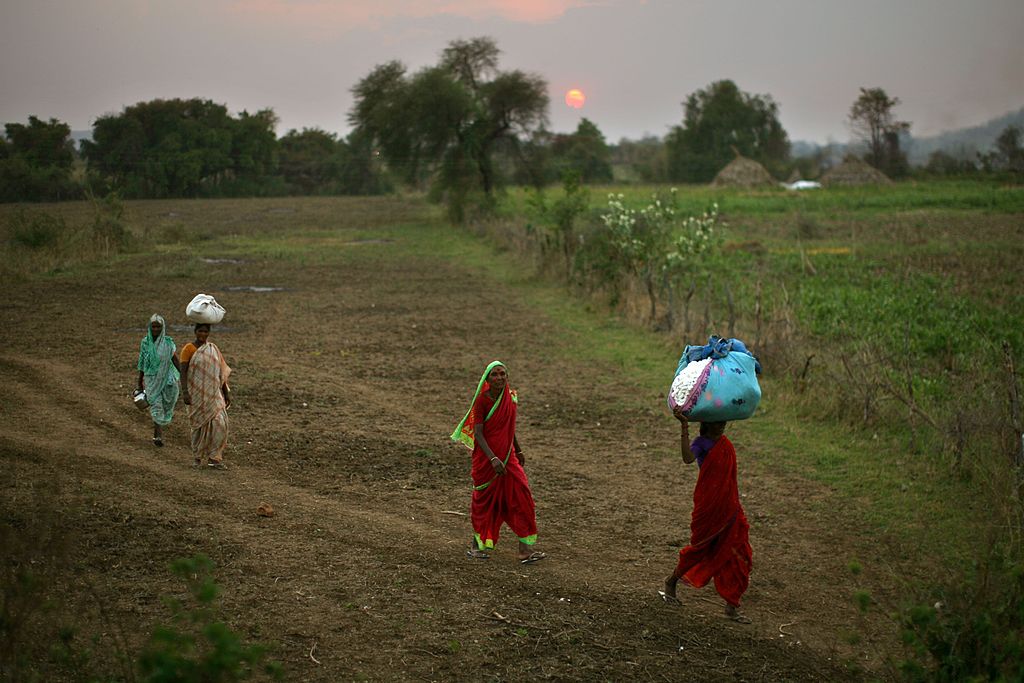- Thursday, May 09, 2024
The demanding nature of the work of women who are forced to migrate to other areas to find livelihoods due to climate-induced droughts forces them to get the uterus removed so that they do not lose income.

By: Shubham Ghosh
INDIA, like the rest of the world, celebrated the International Women’s Day last week, saluting women achievers who inspire others to scale the heights in life. Even the country’s prime minister, Narendra Modi, ensures that he wishes the women on the day and appreciates their contributions towards the progress of the nation and society.
However, amid all the colourful celebrations, many women in the country continue to face stark choices — like either endure hysterectomies (removal of uterus) or risk losing their livelihoods, thanks to the climate crisis.
Yes, you read it right. Women with such miserable lives continue to fight challenges in the semi-arid regions of Beed district in the western Indian state of Maharashtra. Families in the region which has been badly impacted by climate-induced droughts, slip into poverty and women have little option but to migrate in search of livelihood in the fields of sugarcane, which is grown in large quantities in Maharashtra and used for making sugar.
Read: Decades-old ‘shame’ back in focus as women in Bengal jails turn pregnant
The demanding nature of their labour, coupled with exploitative employment conditions, forces women to get their uterus surgically removed to avoid missing work and incurring financial penalties, according to a new paper from the International Institute for Environment and Development (IIED), UK.
Lata Waghmare, who migrates to Karnataka, the southern neighbour of Maharashtra, with her husband every year to work as cane cutters, said she delivered her second baby in a sugarcane field, scared of taking a leave post-delivery because of “khada (leave)” charges.
Read: India likely to double cash handouts to women farmers
“The penalty for skipping one day’s work is in the range of Rs 500 (£4.7) to Rs 1,000 (£9.47). I got back to work five days after the delivery. To feed the baby, I carried her to the field with me,” she told IIED.
“While carrying the cane bundles, I kept her on the floor in one corner. The tractor ran over my baby. I lost my child,” she added.
The 34-year-old woman, who belongs to the Dalit community, one of the most backward classes in India, returned to work the following day, unable to take leave to grieve.
“I bled for a month after the delivery. In March 2010, I went to Beed and got my uterus removed. (The) doctor told me that lifting heavy bundles and not taking rest post-delivery led to the bleeding,” she said.
Hysterectomies of this kind are still taking place despite widespread outcry in the country. The procedure, performed mostly in private clinics, can leave women with lasting pain and mental health problems.
Researchers surveyed 423 households in two different areas of Beed for the paper titled “Women Paying the Cost of Climate Crisis with their Wombs”.
Of the total, people from 253 households migrated to work in the sugar industry.
The majority of those migrating for work said they cut sugarcane during the harvest season.
Local labour contractors — known as “mukkadams” — typically hire husband-and-wife teams or “jodis” to work in pairs, not through formal contracts but informal agreements.
A typical day for these labourers involves shifts ranging from 12 to 16 hours, throughout the six-month harvest period. Men will usually cut the cane while the women will tie and stack bundles. These pairs are often subjected to wage deductions for work missed, creating a fear of taking any leave.
Jayashree Owhal, a 45-year-old cane cutter from Kathawada village in Beed district, told the researchers, “My (menstrual) cramping became unbearable after a point. I went to see a gynaecologist in Beed, he suggested I should stop lifting heavy bundles but that was the only source of income for us. So I decided to get the hysterectomy done and get rid of this every month ‘pain and stain’.”
Other women described having nothing to use as sanitary products other than the clothes they use to carry the cane bundles. These are often left covered in pesticides and chemicals, with tiny cane particles stuck to them.
Ritu Bharadwaj, a principal researcher for IIED, said, “When we talk about the losses incurred and the damage done by climate change, we’re not just talking about flooded apartments in New York, or scorched hillsides in Greece. These women’s experiences are also a result of climate change, which has decimated their livelihoods and, some of what they have lost — their dignity, good health, in some cases, their lives — is difficult to quantify.”
The IIED said drought stood out as the most common reason for migration and more than half the women (55.73 per cent) from households that migrated had undergone a hysterectomy, compared to less than a fifth from households that stayed in Beed (17.06 per cent).
Some told IIED they were still in their twenties when they underwent the procedure.
Analysis of data between 1986 and 2022 shows there has been an average annual decrease in rainfall of about 2.31 millimetres per year in Beed, with droughts becoming more frequent and more severe.
Village records and the IIED survey data suggests a notable shift in migration patterns, with 55.67 per cent having started migrating in the last decade, up from 5.42 per cent three decades ago. This trend correlates with the increasing frequency and severity of drought conditions aggravated by climate change.
(With PTI inputs)
![]()